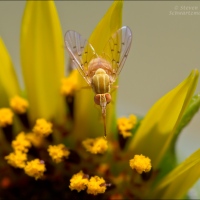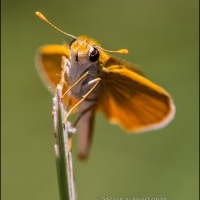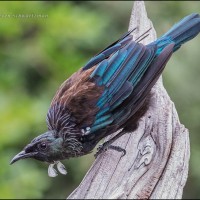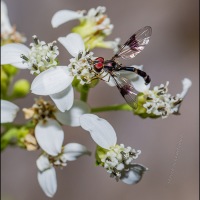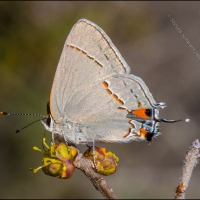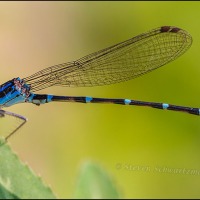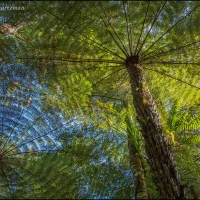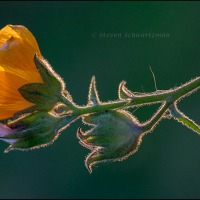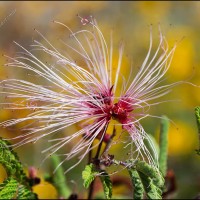Posts Tagged ‘death’
Still standing
On Labor Day in 2011, after months of drought and high temperatures, forest fires broke out in Bastrop that ultimately burned the majority of the loblolly pines (Pinus taeda) in and around Bastrop State Park. In the eighth of a century since then, some of the lost pines’ charred trunks have remained standing above the land, even as new pine trees have been growing back and slowly restoring yesteryear’s green. On March 2nd we drove through the area and I photographed a dozen or so of those blackened sentinels. Here are two rather different takes. In the view below, the bushes behind the charred pine trunk are a species of Baccharis, either neglecta or halimifolia.
✫
✫ ✫ ✫
✫
Follow the science
One theme in my commentaries over the past three years has been that the programs activists push often have consequences that are unforeseen—or worse, that are known but hidden for ideological purposes. With that in mind, consider a March 3rd Wall Street Journal opinion piece by Michael Buschbacher and Taylor Myers titled “Electric Cars Emit More Particulate Pollution,” with subtitle “They have greater tire wear, the source of most particulate matter. California is trying to conceal that fact.”
Did you know that supposedly pollution-free electric cars produce more particulate matter than gasoline cars? I didn’t. Here’s what the article explains:
The Biden administration is reviewing California’s plan to ban the sale of new gasoline-powered cars by 2035. To get federal approval, California claims it “needs” this ban to prevent harm to public health from particulate matter—airborne particles like dust, dirt and soot. But banning gasoline cars would do little to reduce particulate emissions, and it could even increase them.
That’s because new gasoline cars are very clean. According to the Environmental Protection Agency, cars emit only about 1% of all direct fine particulate matter in California, and most of those emissions come from older models. The newer gasoline cars that California wants to ban will often have particulate filters that reduce emissions to below one 1/1,000th of a gram per mile driven.
Where do most particulate emissions attributed to cars come from? California speaks as if their primary source is the tailpipe. That was true in the past. But today most vehicle-related particulate matter comes from tire wear. Cars are heavy, and as their tires rub against the road, they degrade and release tiny, often toxic particles. According to measurements by an emission-analytics firm, in gasoline cars equipped with a particle filter, airborne tire-wear emissions are more than 400 times as great as direct exhaust particulate emissions.
Electric vehicles weigh more, due to their large and heavy batteries, than gasoline-powered counterparts, so electric vehicles wear out tires faster, with the worn material becoming particulate matter. You can read the full article.
© 2024 Steven Schwartzman
Black vultures and dead armadillo
On October 6th we noticed a dead armadillo (Dasypus novemcinctus) on Floral Park Dr., the street we normally take when going out of and back into our neighborhood. By the next day at least a dozen black vultures (Coragyps atratus) were doing their recycling thing—or rather one was, presumably at the top of the pecking order, while the others stood by merely watching. As this sort of thing isn’t to everyone’s liking, I’ve shrunk the picture to the thumbnail below that you can click to enlarge if you want to. And as a compensation for those who don’t want to, the view of wispy clouds came my way a few minutes earlier along the same street.
☙
☙ ☙
☙ ☙ ☙
☙ ☙
☙
And finally, after a week’s worth of quotations from 93-year-old Thomas Sowell‘s new book Social Justice Fallacies, you’re welcome to watch a recent 42-minute interview with the man himself.
© 2023 Steven Schwartzman
An eerie street lamp
Call it an eerie street lamp if you will. Or imagine a medieval flail. The truth resides elsewhere, in an already withered basket-flower plant (Plectocephalus americanus) whose bud, though still shining, was doomed never to go beyond the stage you see here.
☙
☙ ☙ ☙
☙
In the United States we’ve sunk to a new low with a new high: the national debt is now reported to have risen to $32 trillion. Let me write that out in figures so you see how big it is: $32,000,000,000,000. Here’s another way to look at it: each American’s individual share of that debt is about $95,000. For Americans who actually pay federal income taxes—and 40% of American households don’t—their share of the national debt is about $249,000 apiece. To say that such a huge and still growing debt is fiscally irresponsible and therefore a national disgrace is to say the obvious.
© 2023 Steven Schwartzman
Return to the St. Peter Lutheran Church Cemetery in Walburg
Last April bluebonnets (Lupinus texensis) covered parts of the St. Peter Lutheran Church Cemetery in Walburg, about 30 miles north-northeast of Austin. This April 9th we went back and were pleased to find plenty of bluebonnets there again.
Given that the town began as a German settlement in 1881, the oldest tombstones often bear inscriptions in German. The name atop the one below is Katharine Muehlhause. The front of the stone tells us she was born on the 16th of May, 1854, in Waldkappel, Hessen-Kassel, and died on the 26th of March, 1916 (presumably in or near Walburg). The quotation from the New Testament book of John means “I live, and you shall also live.”
Orange lichens now make it easier to read the inscription on the tombstone of Dorathea Kuhn, née Kissman, who was born on the 24th of November, 1813, and died on the 21st of March, 1906.
In contrast to that long life of a little over 87 years, compare the short one below: Louise T., daughter of W.H. & S.H. Homeyer and wife of W.J. Cassens. She died on Christmas Day in 1891 at the age of 19. The line at the bottom reads: “She was a kind and affectionate wife — A fond mother and friend to all.” Her son Wessel Cassens had been born two days earlier, so most likely Louise died from complications of childbirth. Her son lived for only half a year and is also buried in the cemetery, which holds the graves of other infants as well. In those days high child mortality was a sad fact of life—or rather death. Fortunately improvements in sanitation and medicine since then have let many more people live longer and healthier lives.
© 2023 Steven Schwartzman
German tombstones
Because many of the early colonists in central Texas were Germans, it’s not unusual to find old cemeteries here with tombstone inscriptions in German. So it is for the cemetery at the Christ Lutheran Church of Elm Creek southeast of New Berlin—look at that name—which we visited (for I think at least the third time in the past decade) on March 25th, as you saw last time. Here are four of those German-language tombstones, along with translations. (If any of you German speakers catch mistakes in the translations, please let me know.) While the wildflowers surrounding the graves need no translation, I’ll add that the reddish-orange ones are Indian paintbrushes (Castilleja indivisa) and the yellow are Nueces coreopsis (Coreopsis nuecensis).
Here rests in God
Emilie Lippke
Née Koehler
Born 27 September 1853
In Falkenburg, Pomerania
Died 18 January 1889
In Wilson
Softly rests her [soul]
[The ending is effaced.]
Here rests in peace
Edward Lenz
Born
Aug. 5, 1839
Died
Dec. 17, 1929
People’s death is only a sleep.
He gives rest to the weary,
Relieves the burden of those who suffer,
Brings them to eternal peace.
Weep not that this is a farewell:
The dead will arise.
Here rests in peace
The son of H.W.M.
Rosebrock
Born and died
The 27th of October 1900.
Here rests in peace
Mother
Anna Bargfrede
Née Holtermann
Born 26 October 1861
Died 14 June 1932
Farewell, sweet Mother
Farewell for all time
When we find each other again
It will be for eternity.
Psalms 4.9.
© 2023 Steven Schwartzman
Christ Lutheran Church of Elm Creek
On March 25th we made our first visit in several years to the Christ Lutheran Church of Elm Creek southeast of New Berlin, whose grounds, including the cemetery, are reliably alive at this time of year with the myriad native wildflowers that the owners graciously allow to do their thing. The orange flowers are Indian paintbrush (Castilleja indivisa) and the yellow ones are Nueces coreopsis (Coreopsis nuecensis). On the opposite side of the church from the cemetery, Lindheimer’s gaura (Oenothera lindheimeri), though smaller than a paintbrush or coreopsis flower, outnumbered them both by far.
© 2023 Steven Schwartzman
McKeller Cemetery
The Rancho Cemetery in yesterday’s post was the second one we visited on March 13th. The first was the McKeller Cemetery a few miles north of Gonzales. One thing that jumped out at me was the contrast between the colonies of phlox (Phlox drummondii) and bluebonnets (Lupinus subcarnosus) on the one hand, and the artificial flowers people have put on some graves.
And speaking of cemeteries, there’s now lots more information about seashell-covered graves in yesterday’s post about the Rancho Cemetery.
© 2023 Steven Schwartzman
A Halloween lizard
I’ll occasionally punctuate the posts about our great New Mexico/ West Texas trip with some more-recent goings-on back in Austin. And what could be more appropriate for Halloween than a dead lizard? Mind you, I didn’t think it was dead when I first spotted it in our driveway on the morning of October 25th; I figured the cool temperature had rendered it inert while it waited for more warmth. I went back into the house, put a macro lens and ring flash on my camera, and went back out to the driveway. When I looked more closely at what I take to be a Texas spiny lizard (Sceloporus olivaceus), I noticed tiny movements in the eye socket. Then I realized I was seeing ants, and the lizard was dead. If you’re up for a close look at that, click the thumbnail below. Ghastliness is in the eye of the beholder—and in this case the eye of the photograph’s subject.
Happy Halloween.
© 2022 Steven Schwartzman
Two degrees of passing away
In February of 2021 a days-long freeze killed off all the huisache trees (Vachellia farnesiana) in Austin. I saw no new growth for the rest of that year but am happy to report seeing some green springing up from the wreckage in the past few months, even with our current drought. The broken remains of the huisache tree shown here along John Henry Faulk Dr. on August 1st caught my attention because of the Clematis drummondii vine that had climbed on it and had entered its fluffy stage, with the seed-bearing fibers gradually turning dingy and accounting for the vernacular name old man’s beard. Seen from this angle, the fluffy mound calls to mind—at least to my fluffy mind—the way the main part of Spain looks on a map.
❦
❦ ❦ ❦
❦
Last month I quoted from a talk about free speech that Carl Sagan gave in around 1987. The other day I came across another prescient passage, this time from his 1995 book The Demon-Haunted World: Science as a Candle in the Dark:
I have a foreboding of an America in my children’s or grandchildren’s time — when the United States is a service and information economy; when nearly all the manufacturing industries have slipped away to other countries; when awesome technological powers are in the hands of a very few, and no one representing the public interest can even grasp the issues; when the people have lost the ability to set their own agendas or knowledgeably question those in authority; when, clutching our crystals and nervously consulting our horoscopes, our critical faculties in decline, unable to distinguish between what feels good and what’s true, we slide, almost without noticing, back into superstition and darkness. The dumbing down of America is most evident in the slow decay of substantive content in the enormously influential media, the 30-second sound bites (now down to 10 seconds or less), lowest common denominator programming, credulous presentations on pseudoscience and superstition, but especially a kind of celebration of ignorance.
:
© 2022 Steven Schwartzman
Bluebonnet-blessed
This morning Facebook popped up a post from a group I’d never heard of: World Wildflower Photography. The post showed a cemetery in Walburg that had dense bluebonnets (Lupinus texensis) in it. Walburg is a small settlement in eastern Williamson county, much of which has remained rural. Nevertheless, when I searched online I discovered the little town has two cemeteries. Noting the names on a couple of the tombstones in the post’s photographs, I searched in an online cemetery registry and determined that the right cemetery was the one belonging to St. Peter Lutheran Church (which incidentally is a mile away from its cemetery).
Despite the (much needed) rain coming down in Austin, we set out for Walburg and hoped the rain would let up by the time we reached Walburg. It did. Only a minute after we arrived, and before I’d had a chance to take a single picture, another car pulled into the driveway. A couple visiting Texas from North Carolina had also seen pictures of the bluebonnet-covered Walburg cemetery online and had come to check it out, too. Small world, no? And in the middle picture, how about the stylized flower decoration among all the real flowers?
© 2022 Steven Schwartzman






















